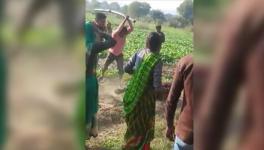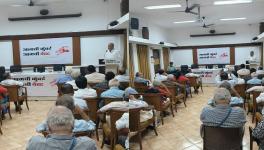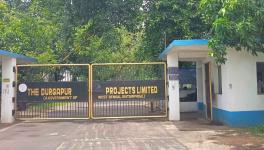MP Becomes First State to Introduce Private Players in Agriculture Sector

Bhopal/Rajgarh: While the central government has gone on a privatisation spree of agencies including Air India, BSNL and Railway, Madhya Pradesh is going to be the first state of the country which has planned to introduce privatisation in agriculture sector in Rajgarh district.
The Water Resources Department has been developing the Kundaliya and Mohanpura multipurpose dam with underground water canals to provide water for irrigation, domestic and industrial uses in the drought-hit Rajgarh district. The primary aim of the project is to provide irrigation to Rajgarh and Agar Malwa district of the state with the help of private companies – L&T, Jain Irrigation, Offshore Infrastructure and Flodia. More than 1,500 villages will be benefited from the project.
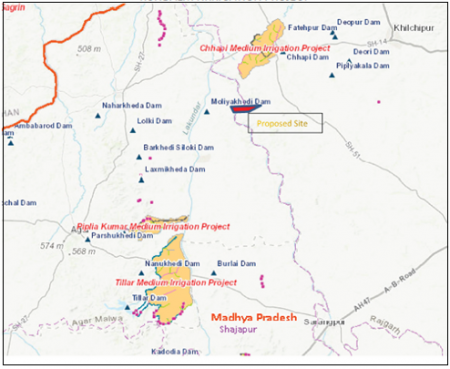
According to the proposal, after the construction of dams, underground water canals will be laid down in the command area. The canals will provide the water for irrigating agricultural fields, which will be provided through pressurised underground pipes for micro irrigation–i.e., drip and sprinkler. In no circumstances, flood irrigation will be allowed.
Under this plan, water intake chamber will be provided at each hectare and farmers will take water from this point to irrigate their fields. The cost of creating drip and sprinkler infrastructure will be borne by farmers. In addition to that, the private company will also provide water to industries at a cost.
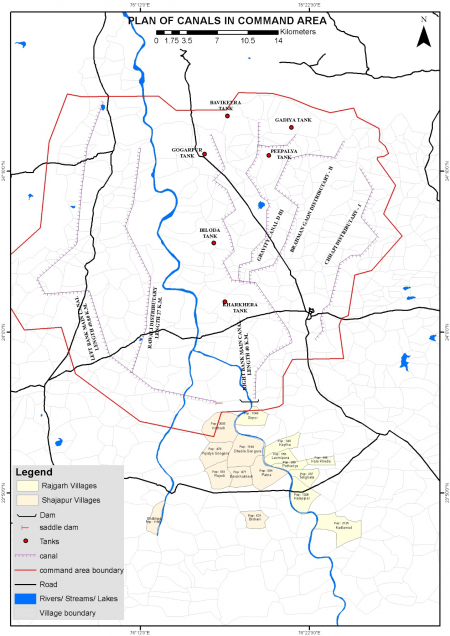
For the construction of both the irrigation projects, Kundaliya at a cost of Rs 3,400 crore and Mohanpura at Rs 3,866 crore, the state government tendered Dilip Buildcon Ltd. and fixed a deadline to complete the project by July 2019. But, both the dams were constructed and filled with water a year before the deadline ahead of Assembly elections in the state. The Mohanpura dam was inaugurated by Prime Minister Narendra Modi on June 22, 2018. The Assembly elections in Madhya Pradesh were on November 28, 2018, in which Congress trounced the BJP after 15 years.
The cost of building the Kundaliya dam itself was Rs 270 crore, while Mohanpura was built at a cost of Rs 415 crore by Dilip Buildcon. For canal work of both the dams with five-year maintenance after the construction, the erstwhile Shivraj Singh Chouhan-led Bharatiya Janata Party (BJP) government roped in L&T, Jain Irrigation, Offshore Infrastructure and Flodia in 2017-18, but, soon after, it ran out of funds.
To complete its ambitious projects, the MP Government took a loan of Rs 1,360 crore from the Asian Development Bank (ADB) for Kundaliya irrigation project and targeted to repay the debt in 21 years. While for the Mohanpura irrigation project, the government took a loan of Rs 2,500 crore from NABARD (run by central government).
Water for Irrigation Not for free
According to the proposal, the private companies will provide last mile connectivity of the water to the farmers, charge according to the government rates initially and collect or recover charges from the beneficiaries.
“Initially, we will charge according to the state government notified rates of Rs 375 for char pani. The rates will increase if they take extra water or if government modifies the rates. Farmers under command area have to take water, otherwise they will be fined with 50% of the government rate,” said the in-charge of Kundaliya and Mohanpura dams, JA Ranawat.

Nevertheless, according to the proposal and ADB’s initial survey report on Kundaliya Irrigation Project, the project design claims that the project is aligned with the three-year agenda of doubling farmers’ income. But when it comes to pricing which is a deciding element for farmers to effectively participate in the public consultation As per ADB’s calculations in March 2017, the recommended tariff is Rs. 11,400/ha – to enable MP Water Resources Department (MPWRD) to finance Management, Operation and Maintenance (MOM) cost of Rs. 1.3 billion per year, assuming a collection efficiency of 90%.
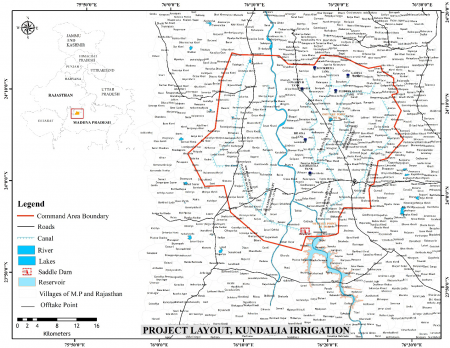
“This tariff also includes incremental cost of power to be borne by MPWRD, but, excludes subsidies to the power cost borne by farmers. Two options are provided for tariff, i.e. Rs. 5000/hectare to begin with (increase of 10% per annum) and a tariff of Rs 6500/ha for a four-year block (>20% increase after that). Whether such a pricing mechanism has been discussed and explained to the people is unknown and whether people will be able to pay this high cost or they will get caught in a debt trap with the contractor which may have its own repercussions,” the initial survey reports says which was conducted in December 2019.
Commenting over the issue, water expert Dr. Arun Singh who has recently visited the dams said, “This is a first of its kind private irrigation project of India, maybe in the Asian continent. The private companies will control the water flow, crop pattern, collect money from the farmers and so on. This is the beginning of a bad trend.”
He further said, “Monitoring is key for this project. If the government fails to keep a tab on the private companies, the results could be anything.”
Crop pattern
At present, Rajgarh has a total irrigated area extending over 77,614 hectare and the semi-irrigated area is 288,204 hectare, making the total irrigated area in district at 365,638 hectare. In coming years, Mohanpura and Kundalia dams will provide irrigation to 269,705 hectare and the proposed Parvati irrigation scheme, Suthaliya irrigation scheme and Barwa Khurram mini irrigation project together will bring an additional 97,840 ha under irrigation. Therefore, the completely irrigated area in Rajgarh will be 388, 206 ha, after the completion of all the ongoing and proposed projects.
Soyabean, wheat and gram are the main crops of the district, which is likely to witness a massive change after the completion of the project. As per the proposal, the private companies will motivate the farmers to grow highly cultivated and highly earned crops, irrespective of the soil and weather and supply water.
“The private companies will decide the crop pattern and motivate the farmers to cultivate the same. Though, the soil of this region is not fertile as it has Gravelled Mixed soil in 60% and 70% area, which is a difficult land to cultivate anything,” said Dr. Arun Singh, adding that the companies will make a chunk of 80-100 acres land and ask the farmers to cultivate the same crop.

NewsClick visited the submergence area of Kundaliya Dam and found that most of the people are unhappy with the compensation given by the government on the collector rate. Around 20-25% people from every village were unsatisfied with the compensation. Not only that, the dams were filled a year before the deadline in July 2019, and villages which fell under the submergence area were vacated just a week before filling the water. As such, many of the villages failed to move their belongings and were forced to run away from the house and lived in a tent or in rented homes.
Many of the villagers claimed that they received the compensation of their home, farm land or received a plot, but, they alleged that no compensation has been given for the standing crops, wells, animals, trees, iron pipelines, temples and so on. Also, due to the filling up of reservoir, their houses, household articles and stored raw grains were submerged.
Sirpoi village was one of the most prosperous villages in the neighbouring area. More than 98% of the villagers have their own agricultural land as well as their own pastureland above the dam. The agricultural land was located near the river so that water was available in plenty for the crops. The village was equally rich in cattle wealth and there were 5000+ cattle here, including cows, buffaloes, bullocks, and goats. The population of Sirpoi at the time of submergence was 1,500 consisting of around 300 families and has 700 voters. In the earlier village (now submerged), people of all castes were living together. However, following the submergence people have started living separately.
Mohammad Shakeel, former Sarpanch of the village, told NewsClick, “In this village, deers and Nilgais were very commonly seen. Nilgais are now destroying the standing crops and hit the farmers. In this new dam, many smaller animals like peacock, monkey, rabbit, fox, jackal etc. also died in the submergence. For saving these animals, local administration could have used loud sounds generated by dhol-nagada so that these animals would have run away from the excessive noise.”
Another resident of the Sirpoi village, Ramesh Gurjar said, “Those who left the villages and camped in their farm land have nothing to eat, no drinking water, no school, no electricity and no work. We belong to a prosperous village, but now were are living a life of gypsies.”
Commenting over the issue, Dr Arun Kumar said, “Just to get political mileage before the election, the then BJP government constructed and filled the dam a year before the scheduled time and villagers were informed a week before filling the reservoirs.”
It has been 18 months since the dam was constructed in June 2018 and reservoirs were filled, but, the dams were of no use, because the canal work has just begun and it will be functional only in 2023.
“We incurred losses of several lakh rupees in crops but this water remains unused till date (end-November 2019). The dam could also have been filled in 2023, but its preponed schedule led to farmers losing 4 years of crops like soybean, wheat, and gram. Moreover, we were forced to leave our houses and land in a hurry just so that they could get political mileage,” said 45-year-old Brijraj Singh.
Get the latest reports & analysis with people's perspective on Protests, movements & deep analytical videos, discussions of the current affairs in your Telegram app. Subscribe to NewsClick's Telegram channel & get Real-Time updates on stories, as they get published on our website.











